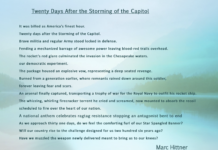There remains an undeveloped area of the Asian subcontinent not yet populated by all-inclusive resorts or hotel chains. Vacationers flying into Colombo, Sri Lanka are shuttled directly to the southwest quadrant where tourism flourishes. But, a trip north of Colombo might be more common than originally thought where coral reefs are also in abundance in the northwest reaches of Sri Lanka. In this post, we explore the mythical bridge of Rama Setu.
Travelers have raved about the hidden beauty of the Southern India Peninsula, Sri Lanka’s neighbor less than 30 miles away. This is an explorer’s destination for those who like the less traveled, unbeaten paths. The Gulf of Mannar Marine National Park offers spectacular scuba diving off the Rameswaram beaches of the peninsula. India’s southern area is far from being a wilderness. There is available bus and train service as well as major flights to and from Madras Airport in Tamil Nadu to other regional southern cities such as Mannargudi, Tiruchirapalli, and Bangalore.
Meanwhile, the Hindu myth offers a story where the Hindu diety, Rama, and his army of monkeys crossed the gap on
And on Sri-Lanka, there is the social-political element to the development of this small region. Sri-Lanka recently ended a 50 year civil war that marked this area with intense bloodshed. A minority group known as the ‘Tamil Eelam’ led a revolution to achieve freedom from the rest of Sri Lanka. Guerrilla-style campaigns were common. In the end, Sri-Lanka’s Buddhist government was finally successful in killing and/or capturing the Tamil Eelam army, most of whom have never been heard of again. Today, the turquoise water laps over the local beaches with little mention of the war.
But it took a huge military effort by the Colonial British to eliminate a ruler of Southern India who was solidly entrenched. His name is Tipu Sultan. He was loved by Hindu and Moslem alike, and his kingdom of Mysore was thoroughly entrenched.
So, once Tipu Sultan was removed from power, British India’s governor systematically corralled an entire Hindu culture of Tamil and finessed the population into subservience. Britain was careful to publicly repress the abhorred practice of ‘slavery’. Instead, the Tamil found themselves as indentured farmers in a strange, new land. The forced migration of the people from Tamil Nadu is a story not frequently read. In the days when opium production was the major commodity of trade with China, the British Colonial machine methodically ferried thousands of Tamil across the Palk Strait. Tamil families were now populating the vast plantation fields of Sri Lanka to eek out an existence amid the British crops.
This story of how Tipu Sultan was finally neutralized by British India’s brash, revengeful, Duke of Wellington is cleverly told in Mark Sysson’s novel, ‘Parson’s Academons’. The novel juxtaposes the modern day struggles of the Tamil against their proud connection to their ancestors who happily served Tipu Sultan. Spoiler alert! Tipu Sultan was directly responsible for America’s ‘Star Spangled Banner’!
The read is fascinating. The novel is available on Amazon Kindle here:
AD:
Custom progamming, database and system support
Best custom computer programming, database and system work. https://custom-software-usa.com Custom Software USA
